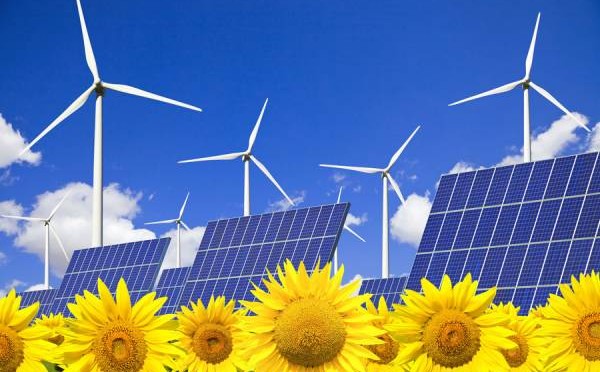A flicker of light in Lebanon’s crippling energy crisis could lie in the form of renewable energy projects.
Industry experts say that a series of projects in the pipeline could mark the start of a trend in which Lebanon shyly starts going green.
One such project is a solar farm that is scheduled to be completed in early 2015.
“This project is the first of its kind [in Lebanon] … in nature and size,” said Ramzi Abu Said, president of the Lebanese Solar Energy Society and managing director of ASACO, one of the companies contracted to build the solar farm.
The project, titled the Beirut River Solar Snake Project (BRSS), is a solar farm built over the Beirut River in Burj Hammoud alongside the Emile Lahoud highway. It will cover the width of the river and span over 300 meters. According to Abu Said, this is only one tenth of the eventual length of the project.
The farm will produce only 1 MW of electricity, meaning it will do very little to meet Lebanon’s growing energy requirement.
“To the average person this doesn’t mean a lot. Energy is something that we consume personally due to our habits,” said Dr. Raymond Ghajar, associate dean of the Department of Electrical and Computer Engineering at the Lebanese American University and senior energy adviser to the energy and water minister.
Ghajar explained that the amount of consumption varies depending on the season and time of day, and it’s therefore difficult to estimate how many houses could be powered by the BRSS project.
But given the current electricity situation in the country, any addition — however small — to the electricity supply is welcomed.
“If it works out and there are no side effects then we prefer this over generators,” said Joseph Shaaya, who owns a store near the project site in Burj Hammoud.
Lebanon experienced two total blackouts in less than 24 hours this week, while Beirut has been suffering from unusually tight electricity rationing throughout the summer, leaving some households without electricity for up to 12 hours at a time due to malfunctions on the network.
The state-owned Electricite du Liban is struggling to address the latest malfunction of a cable, but the task is made harder by the fact that the company’s headquarters in Mar Mikhael is occupied by former contract workers demanding full-time employment at EDL with all benefits.
Talks between EDL and the workers are deadlocked, with neither side wishing to make concessions while the country continues to suffer from extensive power outages.
Fadi al-Chiti, marketing and sales manager at Phoenix Energy, a renewable energy product supplier that has been contracted to work on BRSS, warned that deep structural changes were needed to fix Lebanon’s energy problems and renewable energy sources would not provide a long-term solution.
“We cannot depend only on solar power because we still need the fossil fuel power. Solar energy and renewable energy, will [provide] support,” Chiti told The Daily Star at the recent Beirut Energy Forum at Le Royal Hotel in Dbayeh.
“Renewable energy will support, will reduce, will improve but it will not be a replacement.”
Lebanon currently produces 1,600 MW of power through its aging electricity plants, far short of the 2,500 MW needed to meet demand.
Given the costs of building renewable energy power plants it’s unlikely that Lebanon will ever reach the level of countries like Denmark, which receives 43 percent of its energy from renewable sources and is aiming for 100 percent by 2050.
Although the government has set a target of having 12 percent of the grid powered by renewable energy, sources revealed, BRSS is the first major step toward that.
“This is part of the diversification plan and the commitment of the government to inject power from renewable energy into the grid, whether its wind, solar, biomass,” Ghajar said.
Speaking at this week’s Beirut Energy Forum, the Energy Minister Arthur Nazarian announced that 2015 would see the completion of the BRSS project, as well as a new 3MW solar farm and several different wind power projects ranging from 50 MW to 100 MW.
There are also several interesting projects happening in the private sector. Phoenix Energy currently offers boilers that are powered by olive husks, which Lebanon produces approximately 100,000 tons of annually, Chiti said.
Water heaters powered by the sun are also gaining in popularity in Lebanon. The Italian government recently launched a 1 million euro initiative to train energy experts, raise awareness and install 66 solar water heaters in public buildings.
Solar energy in particular looks to have a bright future in Lebanon. President of ASACO Abu Said thinks that the country has the perfect environment for solar projects.
“[ Lebanon is suited for] solar in particular because we are in the sunny belt. The weather is moderately cool which is really an ideal for electrical generation,” he said.
The only thing holding back solar power in Lebanon is space. Solar farms require extensive land, and real estate in Beirut is extremely expensive. Shady Sadek, founder and manager of Runwaste, thinks that the Bekaa Valley could be an ideal location for future solar farm projects.
“I believe in the future [of renewable energy in Lebanon] especially in the Bekaa Valley because we have a lot of open spaces there. We can build solar farms there, I think the future of solar energy in Lebanon is in Bekka,” Sadek said.
Finding a cost effective location is paramount for the growth of solar energy in Lebanon as it’s clear that the main allure of renewable energy in Lebanon is saving money.
For instance, the Central Bank currently offers loans for renewable energy projects at almost 0 percent interest, and olive husk water heaters can pay for themselves in electricity bill savings. Such perks are what push investors and household consumers to try renewable energy solutions.
http://bakken.com


